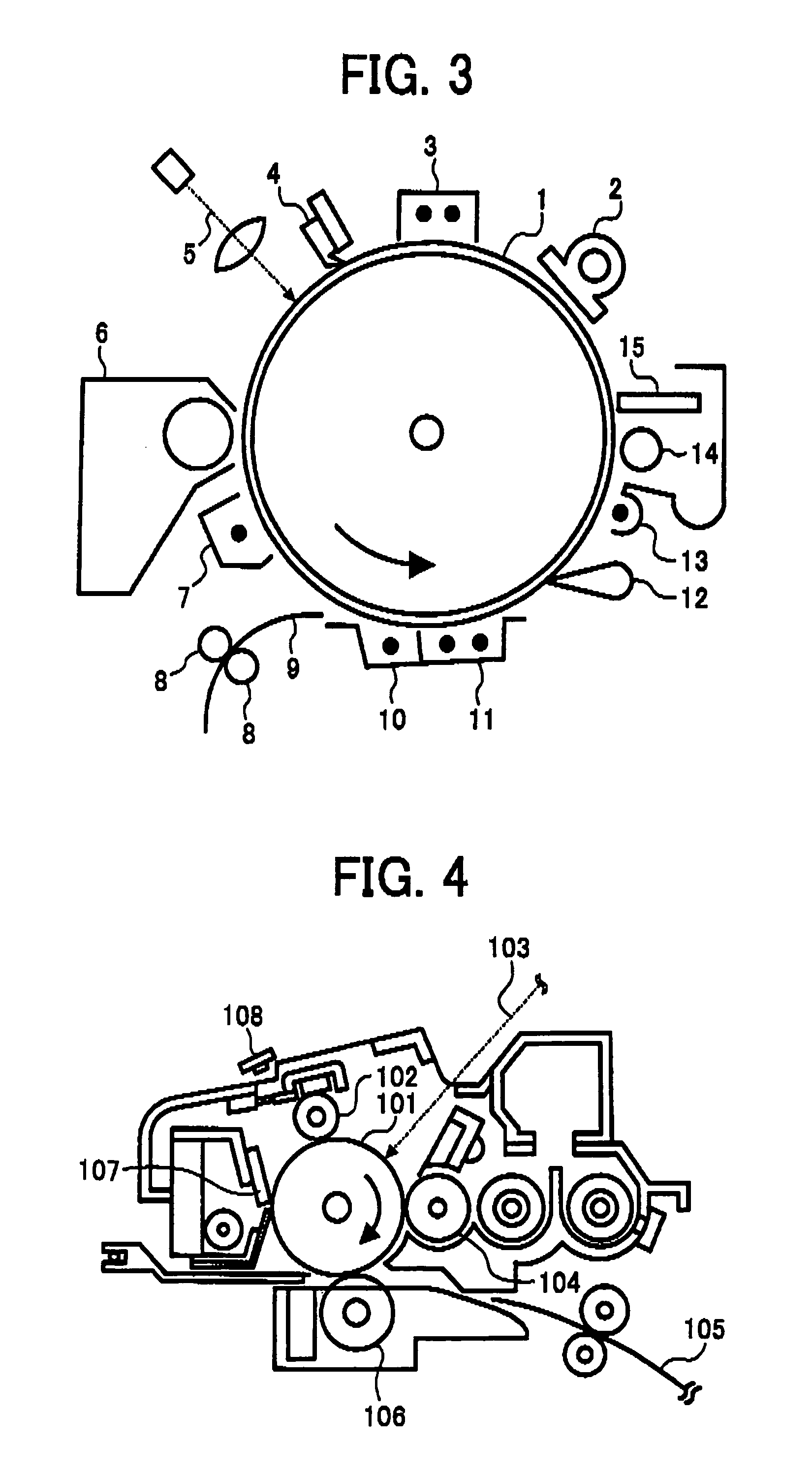Electrophotographic photoreceptor, and image forming method, apparatus and process cartridge therefor using the photoreceptor
a photoreceptor and electrophoresis technology, applied in the direction of electrophoresis, electrographic process, electrographic process using charge pattern, etc., can solve the problems of abnormal images such as image density deterioration, background fouling, and mechanical abrading of organic photoreceptors with image developers, etc., to achieve good cleanability, stable electrical properties, and high durability
- Summary
- Abstract
- Description
- Claims
- Application Information
AI Technical Summary
Benefits of technology
Problems solved by technology
Method used
Image
Examples
example 1
[0222]An undercoat coating liquid, a charge generation coating liquid and charge transport coating liquid, which have the following formulations, were coated in this order on an aluminium cylinder by a dip coating method and dried to prepare a photoreceptor 1 having an undercoat layer of 3.5 μm thick, a CGL of 0.2 μm thick, a CTL of 23 μm thick.
[0223]
Undercoat layer coating liquidTitanium dioxide powder400Melamine resin65Alkyl resin1202-butanone400CGL coating liquidBisazo pigment having the following formula:12Bisphenol Z-type Polycarbonate52-butanone200Cyclohexanone400CTL coating liquidBisphenol Z-type Polycarbonate10CTM having the following formula:10Tetrahydrofuran100
[0224]The CTL was further coated with a crosslinked surface layer coating liquid having the following formulation by a spray coating method.
[0225]
Crosslinked surface layer coating liquidRadical polymerizing monomer having three or more95functional groups without a charge transporting structureTrimethylolpropanetriacr...
example 2
[0228]The procedure for preparation of the electrophotographic photoreceptor in Example 1 was repeated to prepare an electrophotographic photoreceptor with the exception of changing the Reactive silicone compound having a radical polymerizing functional group to:
[0229]Mono-terminal methacryl-modified polysiloxane
[0230]X-22-174DX from Shin-Etsu Chemical Co., Ltd.
[0231]having a molecular weight of 4,600,
[0232]a viscosity of 60 mm2 / s,
[0233]a refraction index at 25° C. of 1.407, and
[0234]a specific gravity at 25° C. of 0.97.
example 3
[0235]The procedure for preparation of the electrophotographic photoreceptor in Example 1 was repeated to prepare an electrophotographic photoreceptor with the exception of changing the Reactive silicone compound having a radical polymerizing functional group to:
[0236]Polydimethylsiloxane having
[0237]a polyether-modified acrylic group
[0238]BYK-UV3500 from BYK Chemie Japan K.K
PUM
| Property | Measurement | Unit |
|---|---|---|
| viscosity | aaaaa | aaaaa |
| viscosity | aaaaa | aaaaa |
| primary particle diameter | aaaaa | aaaaa |
Abstract
Description
Claims
Application Information
 Login to View More
Login to View More - R&D
- Intellectual Property
- Life Sciences
- Materials
- Tech Scout
- Unparalleled Data Quality
- Higher Quality Content
- 60% Fewer Hallucinations
Browse by: Latest US Patents, China's latest patents, Technical Efficacy Thesaurus, Application Domain, Technology Topic, Popular Technical Reports.
© 2025 PatSnap. All rights reserved.Legal|Privacy policy|Modern Slavery Act Transparency Statement|Sitemap|About US| Contact US: help@patsnap.com



